New Shark Protections Take Effect, Offering Some Hope for Recovery
Governments move to meet implementation deadline for CITES measures
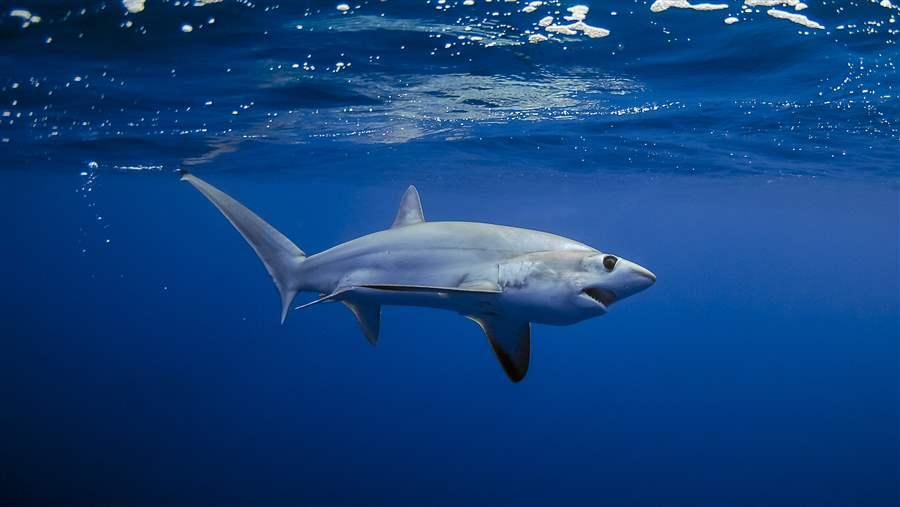
Three species of thresher sharks, including bigeye, received trade protections in 2016 through CITES.
© Jason Arnold/SeaPics
Starting today, governments around the world must ensure that the international trade in four species of sharks—bigeye, common, and pelagic threshers, and silky—is from sustainable and legal sources. These species were included in Appendix II of the Convention on International Trade in Endangered Species of Wild Fauna and Flora (CITES) at the body’s 17th Conference of the Parties (CoP17) in South Africa in October 2016. Appendix II-listed species can be traded internationally, but only if the trade does not cause detriment to the species in the wild.
These requirements signify the recognition by the 183 governments that these four species of sharks had suffered population declines due to extensive, unregulated international trade. Nine species of mobula rays were also listed at CoP17, and their regulations went into force in April of this year. As a result, the total portion of the global shark trade that is being regulated is now around 20 percent—a huge leap from almost zero in 2013.
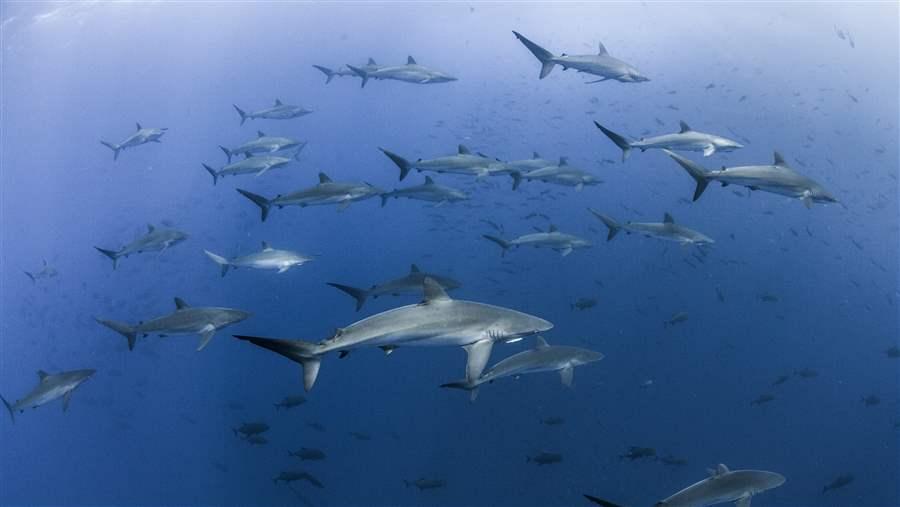
After being listed on CITES Appendix II last year, silky sharks can be traded internationally, but only if the trade is legal and does not cause detriment to the species in the wild.
© Rodrigo Friscione/Getty Image
The entering into force of these listings is only the first step toward protecting the affected species. Governments must have the protocols and regulations in place to ensure that these management measures are successful—work that The Pew Charitable Trusts has supported since 2013.
Many countries are well on their way to that goal. In April, Hong Kong hosted a series of three workshops to train its officials to identify the additional 13 species listed on Appendix II of CITES at CoP17. In partnership with the New Zealand government, Fiji hosted the first regional workshop on the proper implementation and enforcement of all of the recently listed marine species.
Two large-scale projects have been launched in South Asia and West Africa, with funding from Global Partnership for Sharks and Rays to help ensure that governments in those regions have the capacity to enforce CITES shark listings effectively. This includes regional workshops to bring together customs, environment, and fisheries officials, with training on fin identification and advice on how countries can develop assessments known as non detriment findings (NDFs) to ensure that trade is sustainable. Pew and a wide range of partners globally are working with governments to host smaller trainings to help countries determine how to best pathway to domestically implement their CITES obligations.
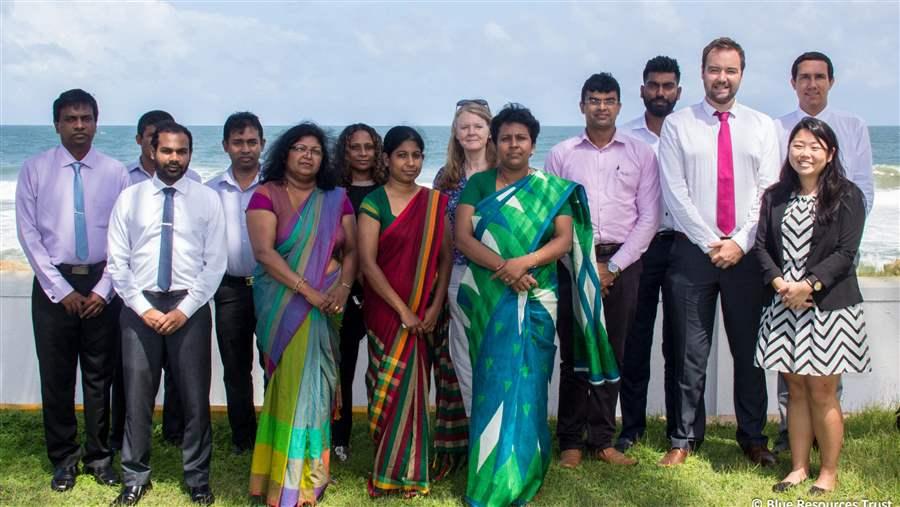
Participants in a Sri Lankan workshop focused on catch data for silky and hammerhead sharks in order to properly manage those species.
© The Pew Charitable Trusts
As a part of this work, Sri Lankan fisheries and environment officials sought the assistance of global experts to analyze catch data and develop NDFs for the country’s silky and hammerhead fisheries, something those officials have not been able to do in the past. They are working to finalize the NDFs over the coming year.
In West Africa, Pew and our partners have been working with officials in Senegal, Mauritania, and Cape Verde to develop capacity-building trainings to help these countries meet their CITES shark obligations. A larger regional training is slated for December 2017.
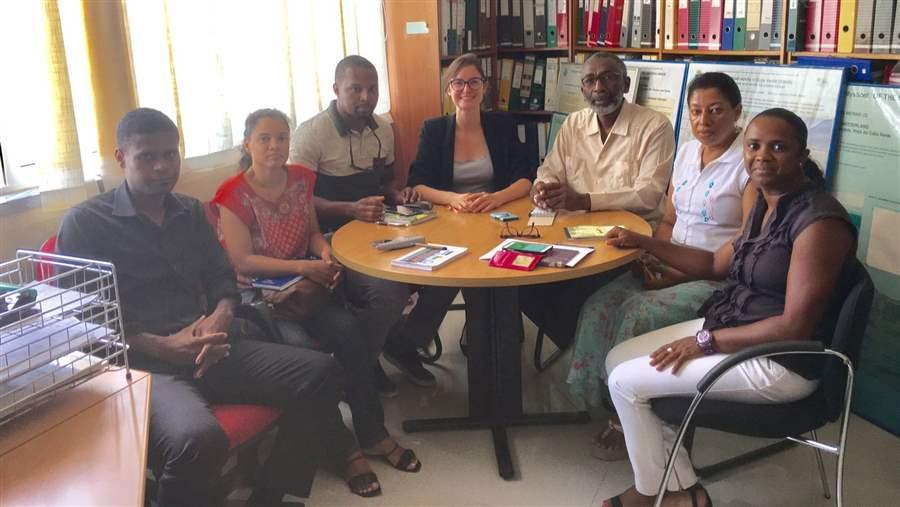
Pew partners meet with Cape Verde officials to discuss additional CITES implementation workshops for the region.
© The Pew Charitable Trusts
Over the next two years, these efforts will expand to other regions and evolve to include more in-depth assistance based on the findings and feedback from the first round of workshops.
If governments worldwide properly implement and enforce the new CITES measures, they can play a central role in reducing the mortality of these shark species, which have suffered drastic declines due to unsustainable trade. Only then will these imperiled animals have a chance for survival and recovery.
Luke Warwick directs The Pew Charitable Trusts’ global shark conservation program.


America’s Overdose Crisis
Sign up for our five-email course explaining the overdose crisis in America, the state of treatment access, and ways to improve care
Sign up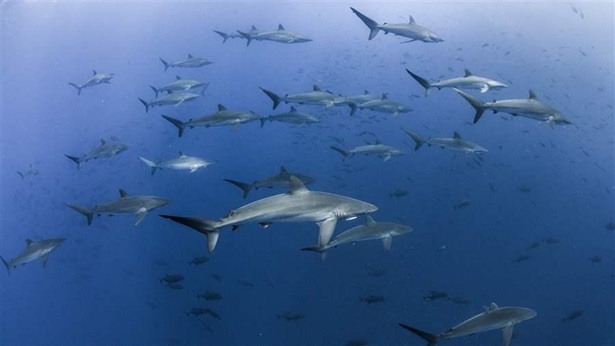
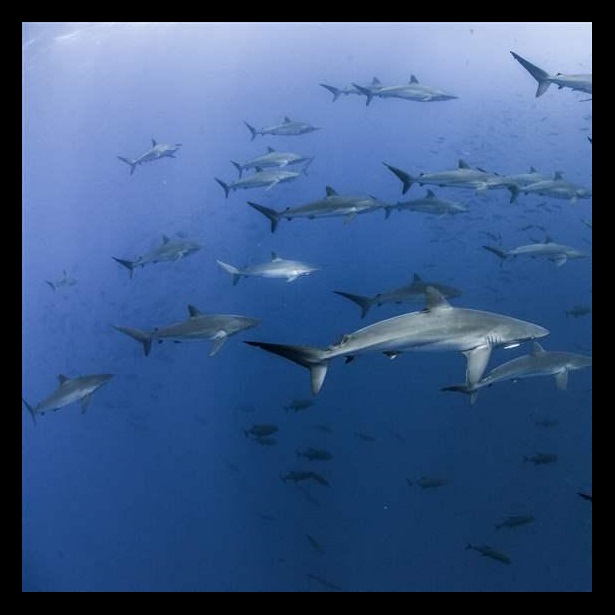
Pew Commends New Shark and Ray Trade Regulations
Silky sharks, thresher sharks, and mobula rays to receive much-needed protections
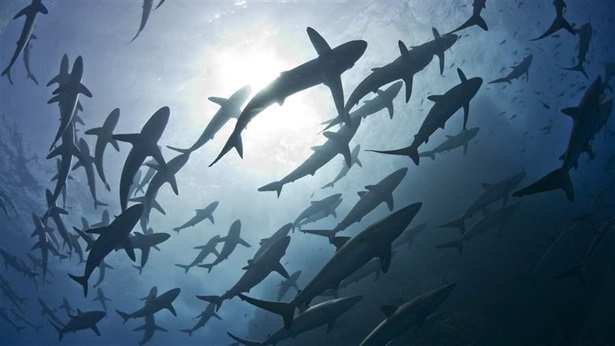
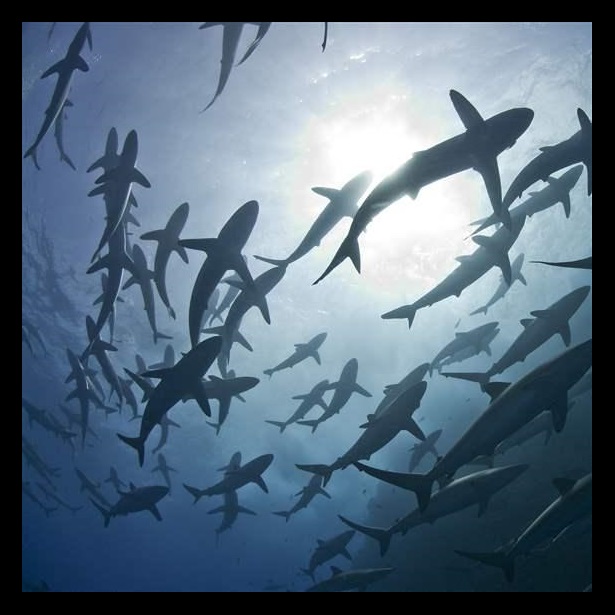
Protecting Sharks, Enforcing CITES
A global effort









